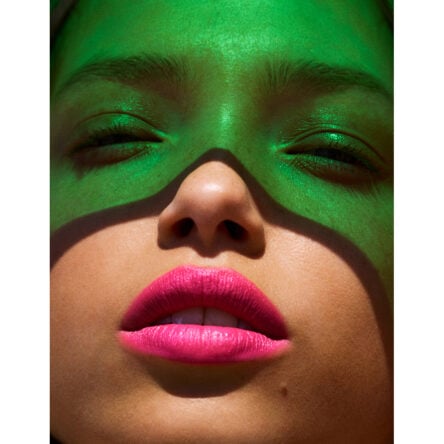
Acne and inflammation are not the only skin issues that can cause us distress. Skin discolouration can also become an issue, especially as we age. Hyperpigmentation refers to the darkening or discolouration of the skin due to an excess production of melanin, the pigment responsible for skin colour. It can manifest as age spots, sun spots, melasma (pregnancy mask), or post-inflammatory hyperpigmentation from acne or other skin injuries. It’s super common, and most of us will experience it in our lifetimes, but what causes it, and how can we treat it?
THIS POST CONTAINS AFFILIATE LINKS

What Causes Hyperpigmentation?
These are some of the most common causes of sunspots and hyperpigmentation:
- Sun exposure: Ultraviolet (UV) radiation from the sun stimulates melanocyte cells to produce more melanin, which can lead to sun spots and age spots.
- Hormonal changes: Fluctuations in hormones during pregnancy, birth control pill use, or hormone replacement therapy can trigger melasma.
- Inflammation: Acne, eczema, or other skin injuries can cause post-inflammatory hyperpigmentation.
- Medications: Some medications, such as antimalarials and chemotherapy drugs, can increase melanin production and lead to discolouration.
- Ageing: As we age, the melanocyte cells become more active, leading to age spots or liver spots.

How Do You Treat It?
There are various treatment options available for hyperpigmentation, ranging from topical products to professional procedures. Topical treatments, such as over-the-counter and prescription creams containing ingredients like hydroquinone, kojic acid, azelaic acid, retinoids, vitamin C, and niacinamide, can help fade hyperpigmentation. Professional chemical peels with alpha-hydroxy acids (AHAs) or trichloroacetic acid (TCA) can also help exfoliate the skin and reduce the appearance of dark spots. Intense pulsed light (IPL) and laser therapies can target and break down the excess melanin in the skin, while microneedling, a procedure that involves creating controlled micro-injuries in the skin to stimulate collagen production and cell turnover can also help improve hyperpigmentation.
Best Products to Treat Hyperpigmentation

KEREN BARTOV
Booster Peel & Glow Serum
SARAH CHAPMAN
Skinesis Skin Tone Perfecting Booster


DR. BARBARA STURM
The Good C Vitamin C Serum
LA PRAIRIE
White Caviar Essence Extraordinaire Illuminating Pre-Serum


LA ROCHE-POSAY
Mela B3 Dark Spot Corrector Serum With Niacinamide
KEREN BARTOV | Booster Peel & Glow Serum
This serum contains a blend of alpha-hydroxy acids (AHAs) and beta-hydroxy acids (BHAs) that gently exfoliate the skin and help reduce the appearance of dark spots and uneven skin tone.
SARAH CHAPMAN | Skinesis Skin Tone Perfecting Booster
This complexion-correcting booster, formulated with botanical skin brighteners, works to reduce the appearance of age spots, sun damage, blotchiness, post-inflammatory hyperpigmentation, melasma, and other skin discolourations. It also targets uneven texture for a brighter overall complexion.
DR. BARBARA STURM | The Good C Vitamin C Serum
Vitamin C is a potent antioxidant that can help inhibit melanin production and brighten the skin. This serum is formulated with a stable form of vitamin C to effectively target hyperpigmentation.
LA PRAIRIE | White Caviar Essence Extraordinaire Illuminating Pre-Serum
This luxurious essence is infused with caviar extract and a proprietary brightening complex to help diminish the appearance of dark spots and promote a more even skin tone.
LA ROCHE-POSAY | Mela B3 Dark Spot Corrector Serum With Niacinamide
Niacinamide, a form of vitamin B3, is known for its ability to inhibit melanin production and improve the appearance of hyperpigmentation. This serum is specifically formulated to target dark spots and discolouration.
READ NEXT: Does Your Skin Need Niacinamide? | 4 of the Best Serums
© Wendy Rowe. All Rights Reserved.












